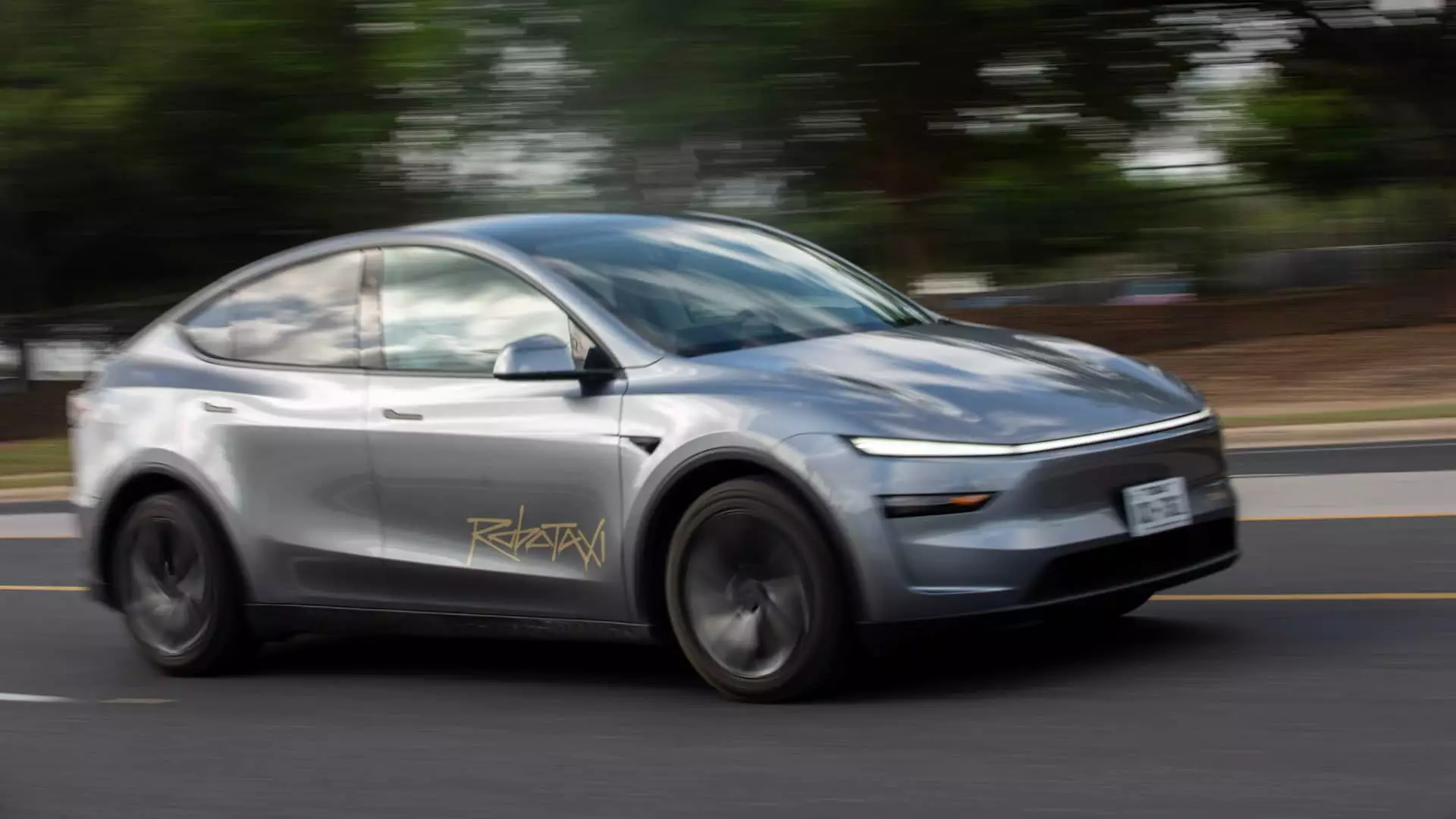Tesla’s rapid propagation of its robotaxi vision paints a picture of revolutionary technological advancement, yet beneath this glossy veneer lies a sobering reality: regulatory barriers and safety policies remain formidable hurdles. Elon Musk’s latest promises suggest a seamless transition into fully autonomous ridesharing, but regulators across key markets like California quickly underscore the gap between ambition and legal legitimacy. The persistent disconnect exposes a foundational flaw—a disconnect between Tesla’s innovation aspirations and the cautious pragmatism of the regulatory environment. While Tesla touts progress, the truth is that the United States remains far from embracing a fully driverless taxi ecosystem. Essentially, Tesla’s plans are set to stumble on legal grounds, with authorities demanding that human oversight remains a non-negotiable condition for operation. This situation reveals a crucial insight: technological innovation cannot outpace public safety considerations, regardless of how ambitious corporate leaders, including Musk, might be.
The Regulatory Wall: Reality vs. Tesla’s Dreams
California’s Public Utilities Commission (CPUC) explicitly states that Tesla is neither authorized nor permitted to carry paying passengers in autonomous vehicles without a human driver present. This isn’t a mere bureaucratic obstacle—it’s a fundamental legal barrier that underscores the cautious approach state regulators are taking towards autonomous ride-hailing. Tesla’s current operations skirt these regulations by framing their service as a non-AV, human-driven taxi under a charter-party permit designed for limousine-like services. This nuanced regulatory distinction underscores a deeper truth: Tesla’s regulatory narrative is a patchwork of creative loopholes rather than a transparent pathway to full autonomy. Meanwhile, separate permits from the California DMV allow Tesla to test AVs with safety drivers, but never to operate in an autonomous capacity for commercial gains without human oversight. This regulatory landscape highlights a critical lesson: real autonomous mobility still resides firmly in the realm of testing and experimentation, not mass-market deployment. Tesla’s ambitions are therefore more aspirational than operational in the immediate term.
The Myth of Rapid Expansion and the Reality of Caution
Despite Elon Musk’s teasing of rapid expansion into markets like the Bay Area, regulatory realities are much less accommodating. Tesla’s recent notifications about extending services to friends, family, and select public users are permissible only within the confines of existing non-AV permits. Consequently, Tesla’s so-called “robotaxi” dreams are constrained by regulatory boundaries rather than technological capabilities. In Austin, where Tesla has launched limited, driver-supervised robotaxi trials, the scope remains narrow—operating only during daylight hours, good weather, and on low-speed roads. These are controlled test environments, not the wild, fully autonomous streets Musk envisions. The disparity between Tesla’s promotional messaging and the regulatory and safety frameworks governing the roads exposes a recurring pattern: Musk’s bravado often outpaces the regulatory readiness. This disconnect risks fostering public misinformation and unrealistic expectations about autonomous vehicle maturity.
The False Promise of Autonomous Vehicles for Public Safety
Tesla’s self-assessment of its driver aids—initially marketed as Autopilot and Full-Self Driving—has recently come under scrutiny for misleading consumers. The California DMV’s allegations suggest that Tesla’s marketing oversimplifies the capabilities of these systems, implying a level of autonomy that does not exist. Tesla’s new branding, “FSD Supervised,” attempts to downplay automation levels but collides with visual evidence from user videos showing drivers employing FSD hands-free for tasks like texting or watching videos. This misrepresentation endangers public safety by fostering a false sense of independence in Tesla’s driver assistance technology. If regulators decide to suspend Tesla’s licenses based on these allegations, it would set a significant precedent—emphasizing that a failure to accurately communicate technological limitations undermines both consumer safety and regulatory authority. Ultimately, Tesla’s promotional strategy risks alienating regulators and the public by prioritizing marketing incentives over safety realities.
Community Engagement and the Future of Robotaxis
One of the more troubling aspects of Tesla’s autonomous ambitions is the apparent lack of transparency with local communities. Officials and residents alike remain largely in the dark about Tesla’s true plans—an oversight that fuels skepticism and concern. Leaders like Stephanie Moulton-Peters and Brian Colbert emphasize the importance of clear communication, especially given the disruptive potential of autonomous taxis. Similarly, industry competitors such as Waymo have sought formal permits and engaged with regulators early, establishing a responsible blueprint for expansion. Tesla’s apparent sidestepping of these processes raises questions about its respect for community engagement and regulatory cooperation. Without proper dialogue and public trust, Tesla risks inflaming tensions and undermining the social license needed for autonomous mobility to succeed. Moreover, this approach may ultimately backfire in the face of stricter regulations, more rigorous safety audits, and public skepticism.
Tesla’s robotaxi vision, once heralded as a harbinger of a driverless transportation revolution, now stands as a cautionary parable about the peril of overpromising without proper regulatory compliance. While Musk’s company champions its technological prowess, regulators and cautious policymakers act as the necessary gatekeepers of public safety. Their insistence on human oversight and regulated testing is not an obstacle but a safeguard. Tesla’s tendency to blur the lines between law and innovation risks diluting the integrity of autonomous vehicle deployment. If the company continues to bypass or sideline regulatory processes, it jeopardizes not only its reputation but also the broader acceptance of autonomous ride-sharing. In a landscape where safety must be paramount, Tesla’s dreams may remain unfulfilled unless grounded in transparency, collaboration, and respect for the rule of law.

